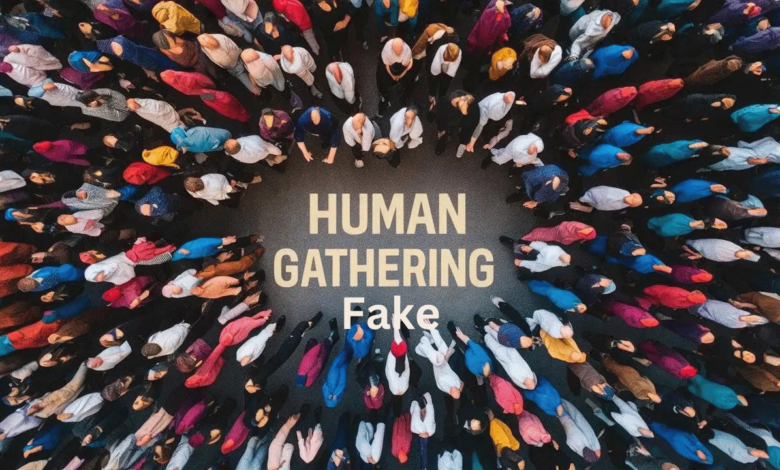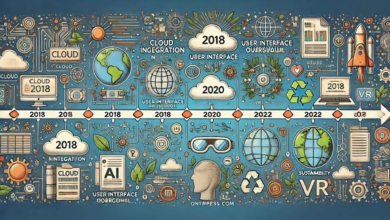The Phenomenon of Human Gathering Fake: Understanding the Modern Challenge

Introduction
In today’s interconnected world, the concept of “human gathering fake” has emerged as a significant social and technological challenge. This term refers to orchestrating events or assemblies that appear genuine but are fabricated or manipulated for various purposes. These gatherings can range from staged protests to artificially inflated social media events. This article delves into the complexities of human gathering fake, exploring its causes, implications, and how society can address it.
The Concept of Human Gathering Fake
Definition and Examples
Human gathering fake refers to events or social gatherings deliberately orchestrated to appear authentic but staged or manipulated. These events are often created to serve specific agendas, such as political gain, marketing strategies, or social influence. Examples include:
- They staged political protests where participants were paid or coerced to attend.
- Fake social media events with artificially inflated attendance numbers.
- Promotional events where the crowd is composed of actors or hired individuals.
Historical Context
The manipulation of human gatherings is not a new phenomenon. Throughout history, various regimes and organizations have used staged events to influence public perception. However, the advent of digital technology and social media has amplified the scale and impact of these fake gatherings, making them more pervasive and harder to detect.
Causes of Human Gathering Fake
Political Motivations
Political entities often create fake gatherings to demonstrate support or dissent. These orchestrations can sway public opinion, influence policy decisions, and manipulate media coverage. For example, a political rally with paid attendees can project an image of widespread support for a candidate or cause.
Commercial Interests
Businesses and marketers may stage events to generate buzz and attract real customers. For instance, a new product launch might feature a crowd of hired individuals to create an impression of high demand and popularity, thereby attracting genuine interest.
Social Media Influence
The quest for social media virality has led to an increase in fake gatherings. Influencers and brands may organize events with inflated attendance numbers to boost their online presence and attract sponsors. The digital amplification of these events can lead to a cascade effect, where more people join in, believing the gathering to be genuine.
Implications of Human Gathering Fake
Erosion of Trust
The prevalence of fake gatherings undermines public trust in genuine events. When people become aware of these manipulations, they may grow skeptical of all social and political gatherings, leading to widespread cynicism and disengagement.
Media Manipulation
Fake gatherings can distort media coverage, as journalists and news outlets may report on these events without verifying their authenticity. This can lead to misinformation and a skewed perception of reality, impacting public discourse and decision-making.
Ethical Concerns
The orchestration of fake gatherings raises significant ethical questions. Manipulating people and public perception for political, commercial, or personal gain can be seen as deceptive and exploitative, challenging the moral integrity of those involved.
Addressing the Challenge
Technological Solutions
Advances in technology can help detect and prevent fake gatherings. Tools that analyze social media patterns, crowd behavior, and event authenticity can identify discrepancies and flag potential fakes. For instance, algorithms can detect unusual spikes in attendance or bot activity, signaling a possible staged event.
Regulatory Measures
Governments and regulatory bodies can implement policies to combat fake gatherings. These measures include stricter guidelines for event organization, transparency requirements for political rallies, and penalties for businesses caught staging fake events.
Public Awareness
Educating the public about the phenomenon of human gatherings that are fake is crucial. Awareness campaigns can help individuals critically assess the authenticity of online and offline events. By fostering a culture of skepticism and critical thinking, society can become more resilient to these manipulative tactics.
Conclusion
Human gathering fake is a complex and multifaceted issue that poses significant challenges in the modern world. By understanding its causes, implications, and potential solutions, society can work towards mitigating its impact. Addressing this phenomenon requires a combination of technological innovation, regulatory action, and public awareness to preserve the integrity of genuine human gatherings.
FAQs
What is a human gathering fake?
A human gathering fake refers to events or assemblies deliberately orchestrated to appear authentic but staged or manipulated for specific agendas.
Why do people create fake gatherings?
They do so for various reasons, including political gain, commercial interests, and social media influence. They manipulate public perception, generate buzz, and attract real attendees.
How can fake gatherings affect public trust?
The prevalence of fake gatherings can erode public trust in genuine events, leading to skepticism and disengagement from social and political activities.
What can be done to detect fake gatherings?
Technological tools can analyze social media patterns and crowd behavior to detect discrepancies and flag potential fake gatherings. Public awareness and regulatory measures also play crucial roles.
Are there ethical concerns associated with fake gatherings?
Yes, manipulating people and public perception for gain raises significant ethical questions, challenging the moral integrity of those involved in orchestrating fake gatherings.
You May Also Read: How to Create a Wikipedia Page1 for Abraham Quiros Villalba Wikipedia 1



